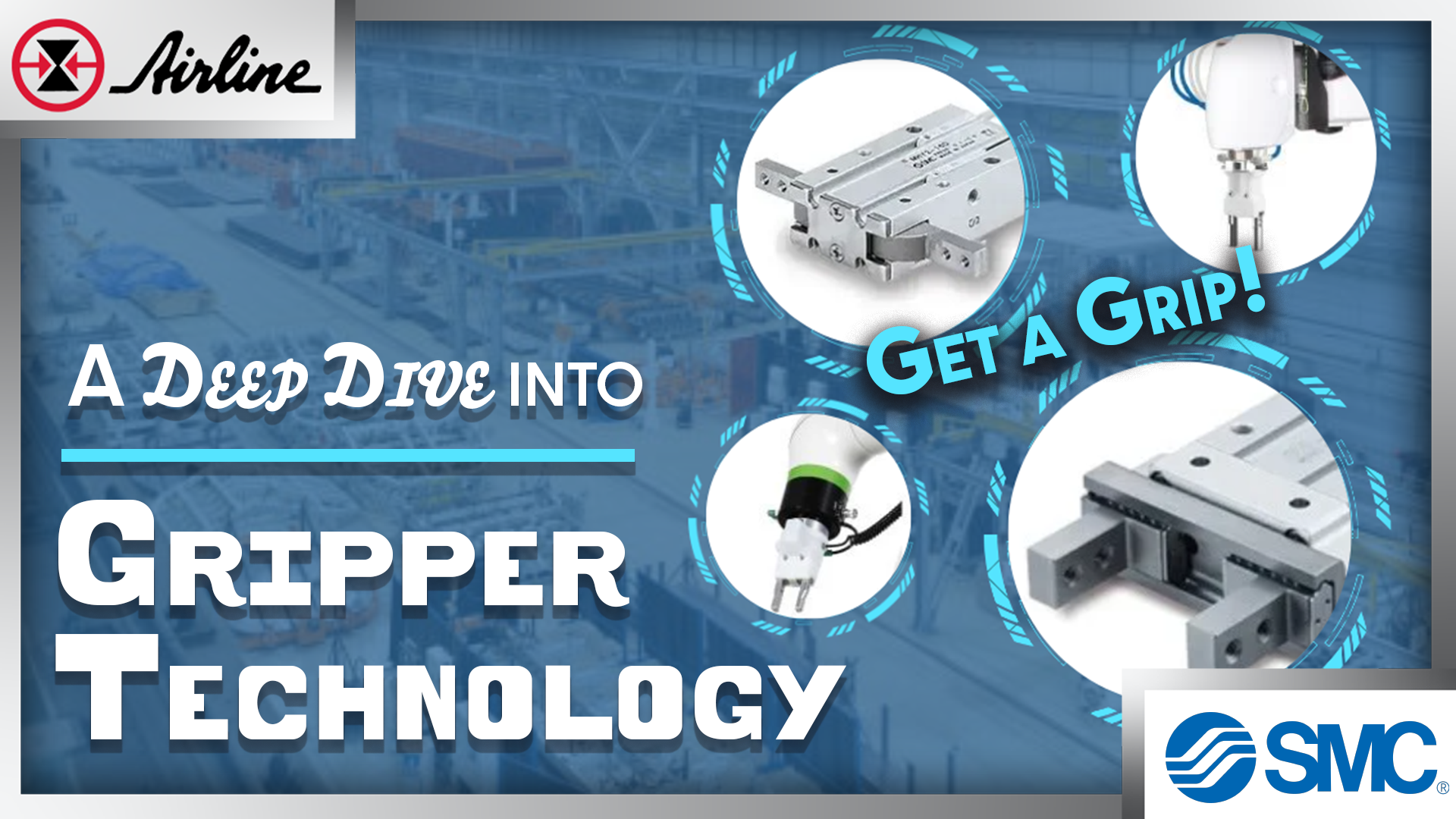Robots have the powerful ability to carefully place a delicate component onto an assembly line and then effortlessly lift a heavy component for the next phase of production.
But how? Gripper technology - the mechanical hands that give robots the ability to interact with the physical world, mimicking the dexterity of human hands. In this blog, we'll dive into what makes these technologies work and what sets different gripper types, like parallel and angular, apart.
In this Post:
What Exactly Is a Gripper? | Types of Grippers | The Secret Sauce: Tooling | Choosing the Right Gripper | Operating Pressure and Gripping Force | Bringing It All Together | Additional Resources
What Exactly Is a Gripper?
Grippers are used in automation to mimic the way human hands work, with fingers designed to clasp, release, and hold onto workpieces. They are often paired with actuators that help move objects from one location to another, such as in a pick-and-place system. A typical pick-and-place setup includes multiple actuators: a linear actuator for back-and-forth movement, a rotary actuator for rotation, and, of course, the gripper itself to handle the object.
But not all grippers are made the same. Let’s explore some common types and how they work.
Types of Grippers
Grippers generally fall into two main categories: parallel and angular.

- Parallel Grippers: As the name suggests, parallel grippers have fingers that move in parallel lines, maintaining a consistent distance between them at all times. These grippers are perfect for applications requiring precision and stability, like picking up small components. Their consistent grip makes them a go-to for applications where repeatability is critical.

- Angular Grippers: Unlike parallel grippers, angular grippers have fingers that pivot around a common point. This type of movement allows for wider opening angles, making angular grippers ideal for handling larger or oddly shaped workpieces. They can reach into areas that a parallel gripper might not be able to access, offering great versatility.
The Secret Sauce: Tooling
Tooling is the magic that gives grippers their flexibility. Essentially, tooling is an extension of the gripper fingers that allows them to adapt to the specific shape and size of the workpiece.
Imagine trying to pick up a screw—without the right tooling, it would be like trying to pick up a marble with boxing gloves on! Tooling can be designed to fit any workpiece, allowing the same gripper to perform different tasks just by changing the tooling.
Friction Is Key: Tooling is often customized to have the right amount of friction needed to securely hold a workpiece. By adding materials like rubberized coatings, grippers can achieve a better grip and prevent the object from slipping during movement.
Choosing the Right Gripper
The choice between a parallel and an angular gripper often depends on the application requirements:
- If space is limited and high precision is required, parallel grippers are usually the best choice. They’re also the most commonly available type, making them ideal for general-purpose use.
- If the workpiece is large or oddly shaped, or if you need to move tooling out of the way quickly, angular grippers are a better fit. They offer larger openings and are often more economical.
Another important factor is whether to opt for an internal or external grip. External grips, where the gripper clasps the outside of the object, are similar to how we humans usually grab things. Internal grips, where the gripper expands inside an object to hold it, are often used when you need to avoid damaging the exterior surface of a delicate workpiece.


Not sure which gripper is right for your application? Schedule a free consultation with our experts and find the perfect match for your needs.
Operating Pressure and Gripping Force
Understanding the operating pressure and required gripping force is key to selecting the right gripper. Grippers operate based on the principle of force equals pressure times area, meaning that the pressure of the pneumatic system directly influences how securely the gripper holds the object. Too much force might crush the workpiece, while too little force could result in a dropped object. It’s all about finding the right balance.
Bringing It All Together
Grippers may seem like simple components, but their impact on automation is significant. They bring a crucial human-like ability to machines, allowing them to handle and manipulate objects with precision and care. Whether it’s assembling delicate electronics or moving hefty metal parts, grippers are the key to making automation more versatile and capable.
So next time you see a robotic arm gracefully moving objects on a production line, remember the gripper—that unsung hero making the magic happen.
Ready to take your automation to the next level? Contact us to learn how our gripper solutions can enhance your production line efficiency.








Leave Comment